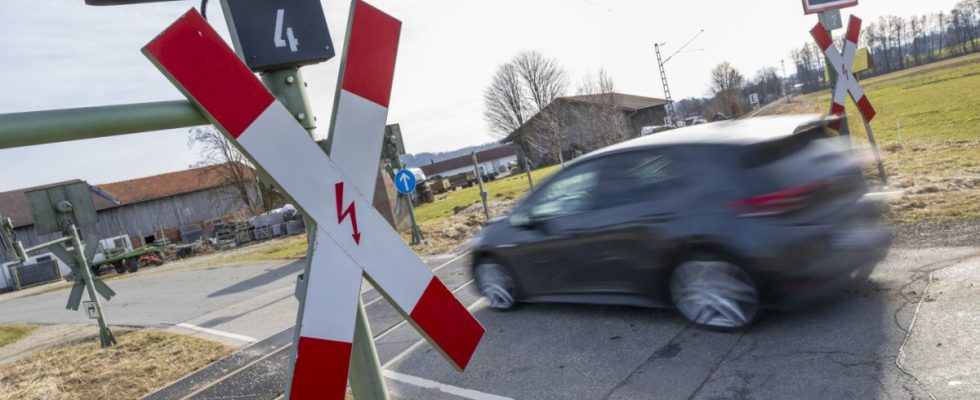Trains have the right of way at level crossings, as determined by road traffic regulations and physics. Because it is usually not practical to bring the multi-ton wagons to a stop. Despite the clear regulations, accidents continue to occur at Bavarian level crossings. According to the Interior Ministry’s traffic accident statistics, there were 48 last year. Six people died and 30 were injured. In 2022 there were 35 accidents with seven deaths and 22 injuries.
The focus is particularly on unrestricted level crossings. The statistics do not specifically record the type of crossing at which an accident occurs. But the caution of crossing drivers is particularly important here. If barriers were put up, situations like these from the past few months could perhaps be avoided: At the beginning of February, a driver near Wasserburg am Inn (Rosenheim district) drove over an unbarred level crossing despite the red light and collided with a regional train.
Last November, a regional train collided with a van at an unguarded railway crossing in Mindelheim, Swabia. And at a level crossing near the Munich S-Bahn stop Fasanerie, railway employees had to cordon off the road with tape for almost a year due to a construction site. Accidents and dangerous situations occurred again and again.
In general, unrestricted level crossings are not uncommon in Bavaria. As a spokeswoman for Deutsche Bahn (DB) reports, there are currently almost 3,000 level crossings in the Free State. Almost half of this is unrestricted, spread across all administrative districts. “For example, it does not make sense to equip all level crossings with full barriers,” writes the spokeswoman. After all, most crossings are areas with little traffic, such as forest or field paths.
Whether busy or not, every intersection is a potential danger spot. That’s why the railway is working on reducing the number of level crossings together with the respective road owners and the federal government. Since 1950, this has halved anyway, says the spokeswoman. Facilities where more accidents occurred were removed as a matter of priority or were equipped with barriers. “The current number is the lowest value in DB history.”
In Germany, the railway crossing law stipulates that rail and road should not meet if possible, at least on newly built paths. If an accident occurs at a crossing, special traffic inspections are carried out, according to Deutsche Bahn. Representatives of the railway, the municipality, the Federal Railway Authority and the police take part in these. If a barrier is to be erected, the railway and the owner of the road, usually a municipality, must first agree on the measure and conclude a so-called crossing agreement. According to the Bavarian Municipal Association, this works well; communication between the railways and municipalities takes place without “real practical problems”. The costs for any measures are then shared by the federal government, the Free State and the railways, depending on what type of railway route it is.
“The municipalities were exempted from bearing the costs,” said a spokesman for the Bavarian Ministry of Construction. In the past five years, Bavaria has spent almost 60 million euros on barriers, warning lights and the construction of overpasses and underpasses. The safest thing to do is to keep rail and road completely free of intersections.
Even the best protective devices don’t help if road users don’t follow the rules. When there is a crash at level crossings, it is usually not the train drivers’ fault. “More than 95 percent of all accidents at level crossings are due to incorrect behavior on the part of road users,” explains Alexander Kreipl, the transport policy spokesman for the ADAC Südbayern.
Most accidents ended with serious consequences because drivers often completely underestimated the speed and the correspondingly longer braking distance of a train. Even if a train driver slams on the brakes, the train still needs a few hundred meters to come to a standstill. “The main causes of accidents are ignorance, carelessness and inattention,” says Kreipl. Or disregarding the protective devices, for example when drivers drive around a half-barrier. In principle, we appeal to road users to always approach level crossings at a moderate speed.

